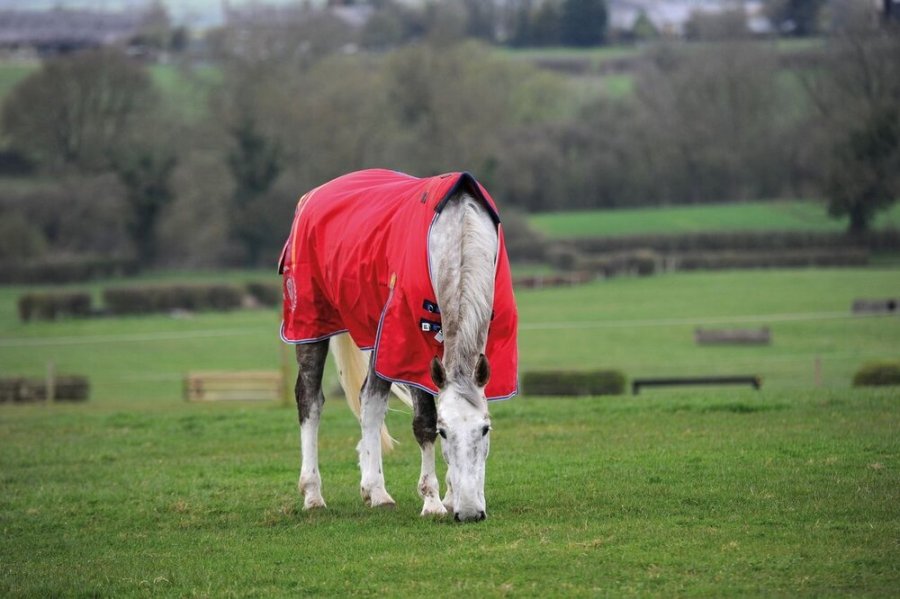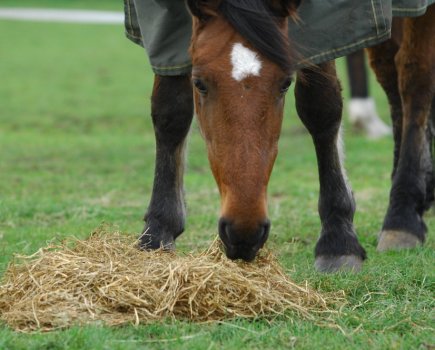Feeding straw, adding rugs when it’s cold and assessing your horse’s workload. Clare Barfoot RNutr, marketing and research and development director at SPILLERS™, filters out the fiction so that you can correctly manage your horse’s weight this winter.
1. My horse needs a rug when it gets cold
MYTH: Horses and especially ponies are metabolically programmed to gain weight when grazing is plentiful, and this will carry them through the winter when grass is in short supply.
Our domesticated friends are better off if we allow them to lose weight naturally over the winter.
Unless it gets very cold and your horse has a large clip, fewer rugs or no rugs at all will encourage him to burn off a few extra pounds by keeping warm.
2. A sluggish good doer needs more feed for energy
MYTH: Energy and calories are exactly the same thing. A good doer is simply converting excess feed to fat rather than burning energy with exercise.
Reduce calorific intake and up the exercise to help get your horse fitter and more enthusiastic over the winter.
Regular exercise will help keep a horse’s waistline in check and support a healthy metabolism.
3. Time wearing a grazing muzzle should be limited
MYTH: Research shows that muzzles can reduce grass intake by up to 80% in ponies turned out for three hours and reduce the rate of weight gain when worn for 10 out of 23 hours at pasture. However, the results are highly individual.
On this basis, those wearing a muzzle for only part of their time at pasture will need close monitoring because they may gain weight and increase the risk of laminitis.
For this reason, non-grass turnout or stabling for the remainder of the day when they are not wearing a muzzle may be more appropriate.
4. You shouldn’t feed horses straw
MYTH: Clean, high-quality straw is useful for good doers and overweight horses to decrease the energy density of hay.
It can be used to replace up to30% of the hay ration but should be introduced slowly.
5. Restricting time at grass is a good plan for weight loss
MYTH: Ponies in particular learn quickly that they need to maximise their time eating and can consume 40% of their daily intake in just three hours, especially if grass is plentiful.
It’s often better to turn out onto a bare paddock or manège and provide a weighed amount of hay, an alternative safe source of forage, or use a grazing muzzle in the field.
6. Balancers can cause weight gain
MYTH: With the exception of stud balancers, all balancers provide a negligible level of calories when fed at the recommended ration, regardless of the manufacturer.
Mixed with a double handful of low-calorie, short-chopped fibre to extend the ration, they are a great option for good doers to ensure they receive the daily vitamins and minerals they need without the calories.
7. Balancers are an expensive way to feed
MYTH: Due to the lowfeeding rate (typically 500g per day for a 500kg horse), balancers are actually a cost-effective way of ensuring your horse receives a balanced diet.
Depending on pack size, a bag of balancer will typically last around 30 to 40 days for a 500kg horse and, in the majority of cases, costs less than £1 per day to feed (in some cases, less than 60p).
8. A horse being hacked and schooled four or five times a week is in medium work
MYTH: It’s common for riders to over-estimate the work their horse is doing and over-feed accordingly, especially during winter.
When deciding what and how much to feed your horse, assessing condition is more relevant and helpful than workload.
An underweight horse in light work will need additional calories, but an overweight horse in medium work will need fewer calories.
9. Haylage should be fed at a lower weight than hay
MYTH: Hay is, on average, 15% water and although haylage is more variable, 30% water would be typical.
This means that 1kg of hay will provide 850g of dry matter, but only 700g in the case of haylage
If you don’t adjust for this your horse could end up losing weight or have a compromised digestive system due to lack of fibre.
Feeding haylage at 20 to 25% more by weight than hay is advisable. To be really accurate, it’s best to have it analysed for the dry matter content and also for nutritional value if your horse is on a weight-loss programme.








